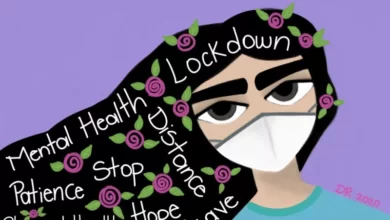Blended Learning Models and Their Effectiveness

In today’s technology-driven era, traditional methods of learning are no longer enough to meet the growing demands of education. Blended learning, a combination of online and in-person learning, has emerged as a popular approach in recent years. This article will explore the different types of blended learning models and their effectiveness in enhancing student learning outcomes.
Introduction
Blended learning combines online learning with traditional classroom teaching to provide students with an immersive and personalized learning experience. This approach to learning combines the best of both worlds by utilizing technology to enhance learning outcomes while maintaining the benefits of face-to-face teaching. In recent years, blended learning models have gained popularity due to their flexibility, personalized approach, and improved learning outcomes.
What is blended learning?
Blended learning is an approach to education that combines online learning and traditional classroom teaching. It aims to provide students with a flexible and personalized learning experience by utilizing technology to enhance learning outcomes. Blended learning models vary, but they all share the common goal of combining the benefits of online learning with face-to-face teaching.
The different types of blended learning models
Rotation Model
The Rotation Model is one of the most popular blended learning models. In this model, students rotate between traditional classroom teaching and online learning. This model allows students to work at their own pace and receive personalized instruction, while also benefiting from teacher-led instruction and group work.
Flex Model
The Flex Model is a flexible approach to blended learning that allows students to choose when and where they want to learn. Students have control over the pace and content of their learning, and teachers act as facilitators rather than instructors.
Self-Blend Model
The Self-Blend Model is a student-centered approach to blended learning. Students have the flexibility to choose the courses they want to take online and the courses they want to take in a traditional classroom setting. This model allows students to create a personalized learning experience tailored to their needs and preferences.
Enriched-Virtual Model
The Enriched-Virtual Model combines online learning with traditional classroom teaching. In this model, students attend class in person a few days a week and complete online coursework on the remaining days. This model provides students with a personalized learning experience while still maintaining face-to-face interaction with teachers and peers.
Flipped Classroom Model
The Flipped Classroom Model is a popular approach to blended learning that involves flipping the traditional classroom model. In this model, students watch pre-recorded lectures or complete online coursework before attending class. This allows teachers to spend more time facilitating group work and answering questions, rather than lecturing.
The effectiveness of blended learning models
Blended learning models have proven to be effective in improving student learning outcomes. Here are some of the benefits of blended learning models:
Improved Student Engagement
Blended learning models have been shown to increase student engagement and motivation. The flexibility and personalized approach to learning help students stay engaged and interested in the
material, while the use of technology such as gamification and interactive content keeps students engaged.
Personalized Learning
Blended learning models provide students with a personalized learning experience. Students can work at their own pace and receive individualized instruction and feedback from teachers. This approach to learning takes into account the different learning styles and preferences of students, ensuring that each student gets the support they need to succeed.
Better Learning Outcomes
Studies have shown that blended learning models lead to better learning outcomes. Students who participate in blended learning programs have higher grades, better attendance rates, and improved retention of knowledge. This is due to the personalized approach to learning, increased student engagement, and the use of technology to enhance learning.
Enhanced Teacher-Student Interaction
Blended learning models facilitate better teacher-student interaction. Teachers can spend more time working with individual students and providing personalized instruction and feedback. The use of technology also enables teachers to monitor student progress more closely and provide targeted interventions when necessary.
Improved Accessibility
Blended learning models can improve access to education. Students who are unable to attend traditional classroom settings, such as those with disabilities or living in remote areas, can still participate in blended learning programs. This enables more students to access quality education and realize their full potential.
Challenges of blended learning models
Despite the many benefits of blended learning models, there are also some challenges to consider. These include:
- The need for adequate technology and infrastructure
- The need for training and support for teachers and students
- The potential for student isolation and disengagement in online learning
- The challenge of maintaining a balance between online and in-person learning
It is important to address these challenges in order to maximize the benefits of blended learning models.
material, while the use of technology such as gamification and interactive content keeps students engaged.
Best practices for implementing blended learning models
To ensure the success of blended learning models, there are some best practices that schools and educators should follow. These include:
Conduct a needs assessment
Before implementing a blended learning model, it is important to conduct a needs assessment to determine the specific needs of the school, teachers, and students. This will help identify the appropriate technology, resources, and support required to implement the model effectively.
Provide adequate technology and infrastructure
One of the key components of blended learning models is the use of technology. It is important to provide students and teachers with the necessary technology and infrastructure to support online learning, such as computers, internet access, and learning management systems.
Train and support teachers and students
Teachers and students need to be trained and supported in order to effectively implement and participate in blended learning programs. This includes training on the use of technology, pedagogical approaches, and support for students who may need extra help.
Develop a clear instructional design
A clear instructional design is essential for blended learning models. This includes developing a curriculum that is aligned with learning objectives, selecting appropriate technology and resources, and designing assessments that measure learning outcomes.
Maintain a balance between online and in-person learning
Blended learning models should maintain a balance between online and in-person learning. This means ensuring that students have opportunities for face-to-face interactions with teachers and peers, while also taking advantage of the benefits of online learning.
Examples of successful blended learning models
There are many examples of successful blended learning models in schools and universities around the world. Here are a few examples:
Summit Learning
Summit Learning is a personalized learning program that uses a blended learning model. Students work through online content at their own pace, while teachers provide support and feedback. The program has been successful in improving student learning outcomes and engagement.
AltSchool
AltSchool is a network of private schools that use a personalized blended learning model. Students work through online content and engage in project-based learning, while teachers provide individualized instruction and support. The program has been successful in improving student learning outcomes and preparing students for the future.
Khan Academy
Khan Academy is a free online learning platform that uses a blended learning model. Students can access videos, interactive exercises, and assessments online, while teachers provide support and guidance. The program has been successful in improving student learning outcomes and providing access to quality education for all.



